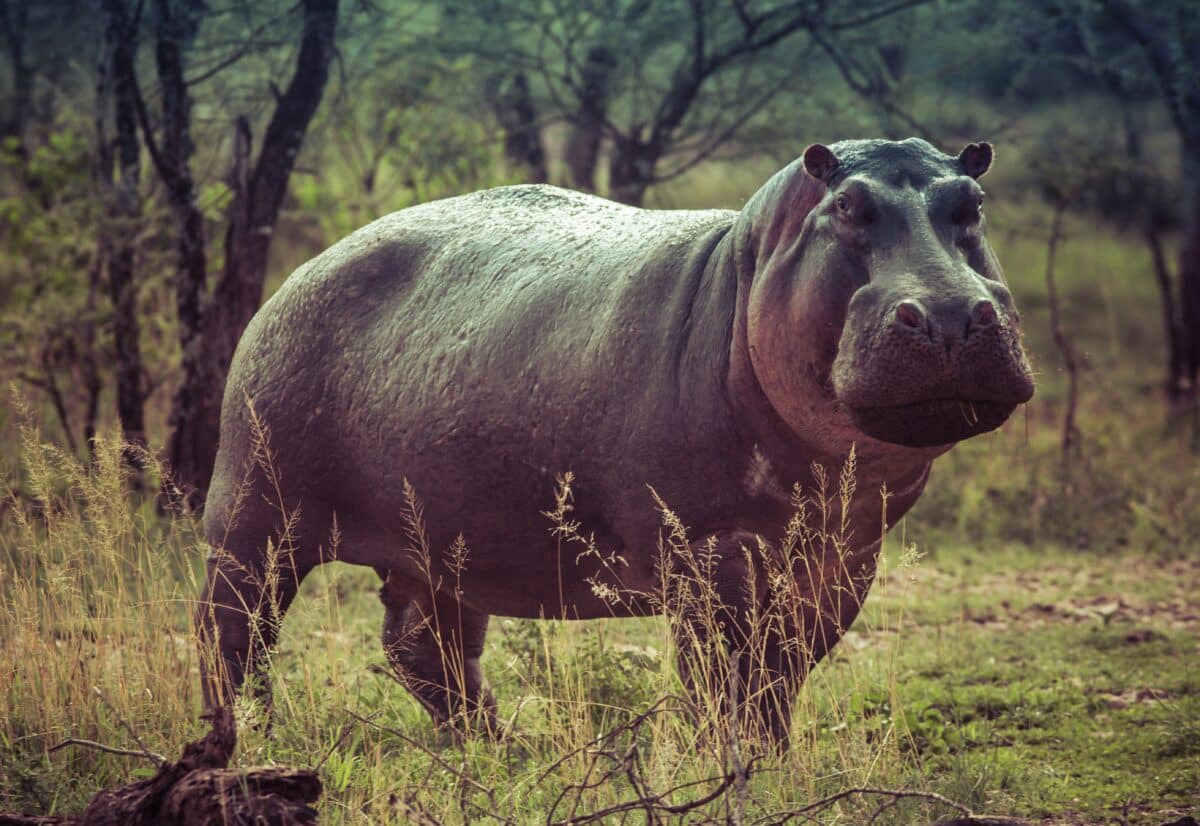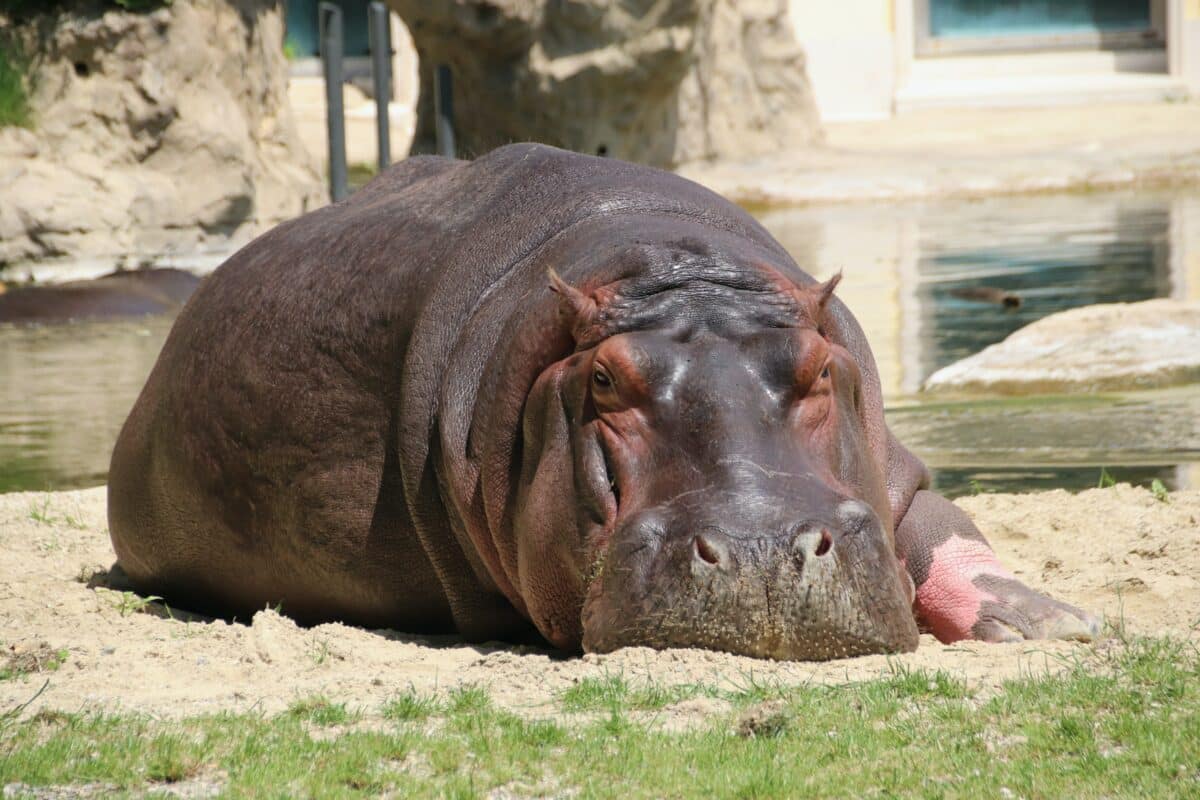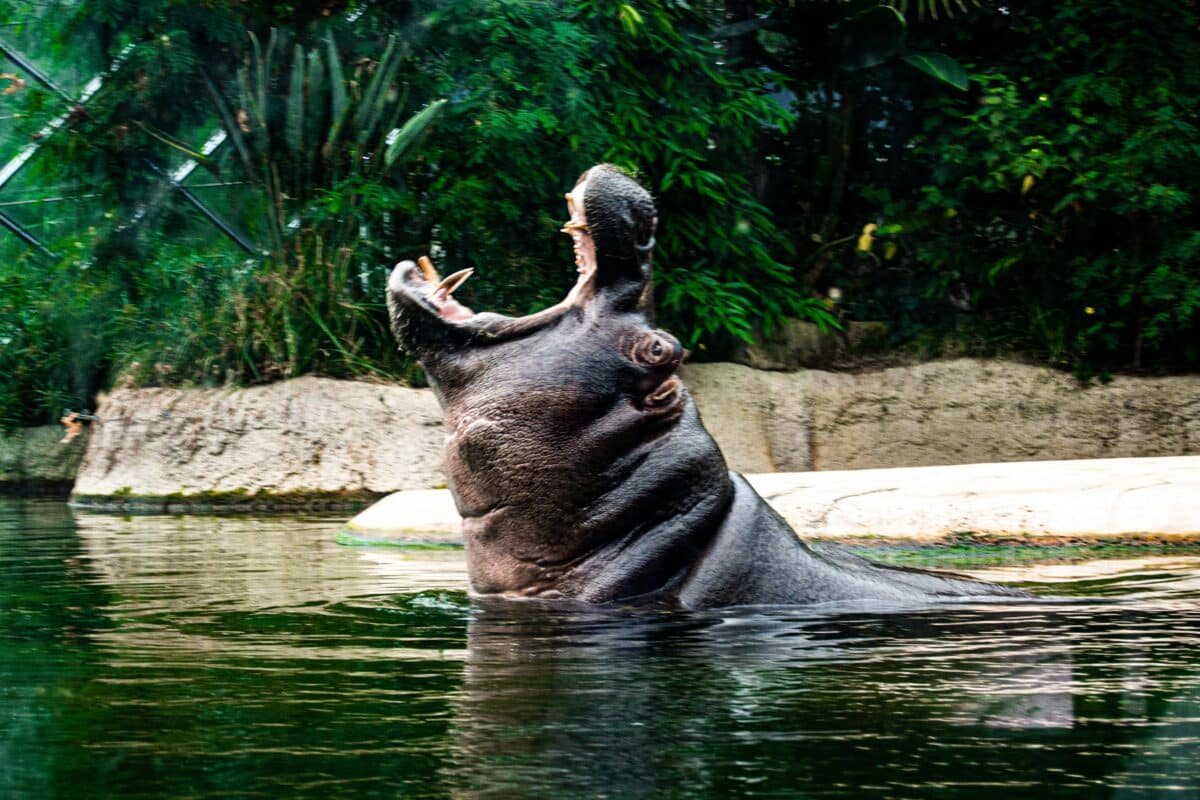As a wildlife enthusiast, I am always fascinated by the incredible diversity of species that inhabit our planet. One of the most fascinating animals I have encountered in my studies is the Hippopotamus. From the largest Hippo ever recorded , MurBarak, to the ancient legends of the “Gorgon-faced hippo.”

The essential role hippos play in maintaining the health and diversity of freshwater ecosystems, there is so much to discover about these remarkable creatures. Join me to explore the world of hippos and all they offer.
Key Points

Mubarak, a male hippopotamus, was known for his amicable disposition towards humans. He achieved a remarkable age of 100 before his passing in 2017, making him one of the oldest hippos in captivity.
- On the other hand, the Hippopotamus gorgops was an extinct species of hippopotamus that once inhabited Africa during the Pleistocene epoch. This species could reach lengths of up to 4.5 meters and weighed as much as 4,500 kilograms, making it an impressive and hefty presence in its time.
The Largest Hippo Ever Recorded – MurBarak

Mubarak, the renowned male hippopotamus, achieved fame in Egypt for his seemingly “friendly” disposition towards humans. His home was the picturesque Aswan Botanical Garden, situated on an island in the Nile River in southern Egypt, and he became a beloved attraction for garden visitors.
Weighing an impressive 4,500 kilograms (9,920 pounds), Mubarak originally hailed from Niger and lived well into the late 20th century. Remarkably, he reached around 100 years of age before his passing in 2017, making him one of the oldest hippos in captivity. Mubarak was known for his placid temperament, often allowing humans to interact with him, including touching and even taking rides on his back.
In 2014, a group of activists launched a campaign to secure Mubarak’s release from captivity, advocating for his relocation to a wildlife sanctuary. They argued that keeping him in a confined enclosure within the botanical garden was inhumane. However, park officials resisted, expressing concerns about his age and ability to adapt to a new environment.
Controversy aside, Mubarak remained a cherished figure in Egypt, with countless visitors to the Aswan Botanical Garden capturing moments with him and sharing their experiences on social media. His passing in 2017 was met with mourning among many Egyptians, who regarded him as a symbol of their country’s natural beauty and rich wildlife heritage.
Hippopotamus Gorgops – The Ancient Legend
The Hippopotamus gorgops, colloquially referred to as the “Gorgon-faced hippo,” represents an extinct species within the Hippopotamus genus. These creatures once roamed the African landscape during the Pleistocene epoch, spanning a time frame from approximately 1.8 million to 11,000 years ago.
One of the most striking features of the Hippopotamus gorgops was its incredibly distinctive skull shape. This Hippo sported an unusual, flattened skull with large openings at the front, likely accommodating muscles for its lips and nose. These unique facial features bestowed upon it a remarkably “gorgon-like” appearance, which gave rise to its common name.
Size was another noteworthy characteristic of the Hippopotamus gorgops. Estimates suggest that individuals of this species could reach lengths of up to 4.5 meters (15 feet) and weigh as much as 4,500 kilograms (9,920 pounds), solidifying its status as one of the largest hippopotamus species in history.
Regrettably, our understanding of the behavior and ecology of the Hippopotamus gorgops is limited, as only a scant number of fossils have been unearthed for scientific study. However, researchers speculate that it likely followed a semi-aquatic herbivorous lifestyle, akin to modern-day hippos, and may have congregated in sizable herds near rivers and lakes.
The story of the Hippopotamus gorgops concludes with its extinction, a fate potentially sealed by a combination of climate changes and early human hunting practices.
The Ecological Impact of Hippos

Hippos are semi-aquatic herbivores that play an essential role in the ecology of the freshwater habitats they inhabit. Here are some of the ways hippos impact their environment:
Grazing
Hippos are important grazers, feeding on aquatic plants and grasses. Their grazing can create open areas in marine habitats. Allowing sunlight to reach the bottom and stimulating other plants and algae growth. This can create a more diverse ecosystem and provide food and habitat for other animals.
Nutrient cycling
Hippos excrete large amounts of feces and urine, which can enrich the nutrient content of the water and sediment in their habitats. This can enhance the growth of plants and algae, which in turn can support more animal life.
Territorial behaviour
Hippos are highly territorial and will defend their home ranges against other hippos and animals. This can help to maintain healthy aquatic habitats by preventing overgrazing and maintaining open areas.
Creation of wallows
Hippos create wallows, or shallow pools of water, to cool off and moisten their skin. These wallows can also provide habitat for other aquatic species, such as fish and invertebrates.
Overall, hippos play an essential role in maintaining the health and diversity of freshwater ecosystems. However, their populations are currently threatened by habitat loss, poaching, and other human activities, which can negatively impact the ecosystems they inhabit.
Conclusion

Wildlife enthusiasts and animal lovers, such as myself, will be fascinated to learn about the largest Hippo ever recorded, Mubarak, who lived in Egypt’s Aswan Botanical Garden.
Weighing in at a massive 4,500 kilograms and 100 years old at his death in 2017. Mubarak was known for his friendly demeanor and willingness to interact with humans.
Despite the controversy surrounding his captivity, Mubarak remained a beloved figure in Egypt and a symbol of the country’s natural beauty and wildlife.
The Hippopotamus gorgops is a fascinating and unique example for those intrigued by ancient creatures. This extinct species of Hippo lived during the Pleistocene epoch and has a distinctive, “gorgon-like” skull shape and enormous size, estimated to reach up to 4.5 meters in length and weigh as much as 4,500 kg.
While little is known about the behavior and ecology of this species. Scientists believe it was a semi-aquatic herbivore and likely lived near rivers and lakes.
Finally, for those interested in the ecological impact of hippos. These semi-aquatic herbivores play a crucial role in maintaining the health and diversity of freshwater ecosystems.
Their grazing, nutrient cycling, territorial behavior, and creation of wallows all contribute to the creation of diverse habitats that support various animal life.
However, human activities such as habitat loss and poaching threaten hippo populations and the ecosystems they inhabit.
Thank you for following along with this article!
Next up in the animal-news world:
- The Record-Breaking Size of the Largest Orca Whale
- Meet Frosty: The Leucistic Orca Calf
- The Largest Whale Shark Ever Recorded – 47,000 Pounds
- The Tail of the “Man-Eater of Mfuwe”
- Mass Deaths of Dolphins in the Black Sea Linked to the Russians
- Pregnant Hammerhead Shark Washes Ashore in Alabama
- 2,000 Endangered Rhinos to the Highest Bidder
- Cows Jump from Boat and Goes Swimming - April 16, 2024
- Leopard Catches Domestic Dog - April 16, 2024
- Watch: Dog Decides to Swim Along Owner During Walk - April 16, 2024


